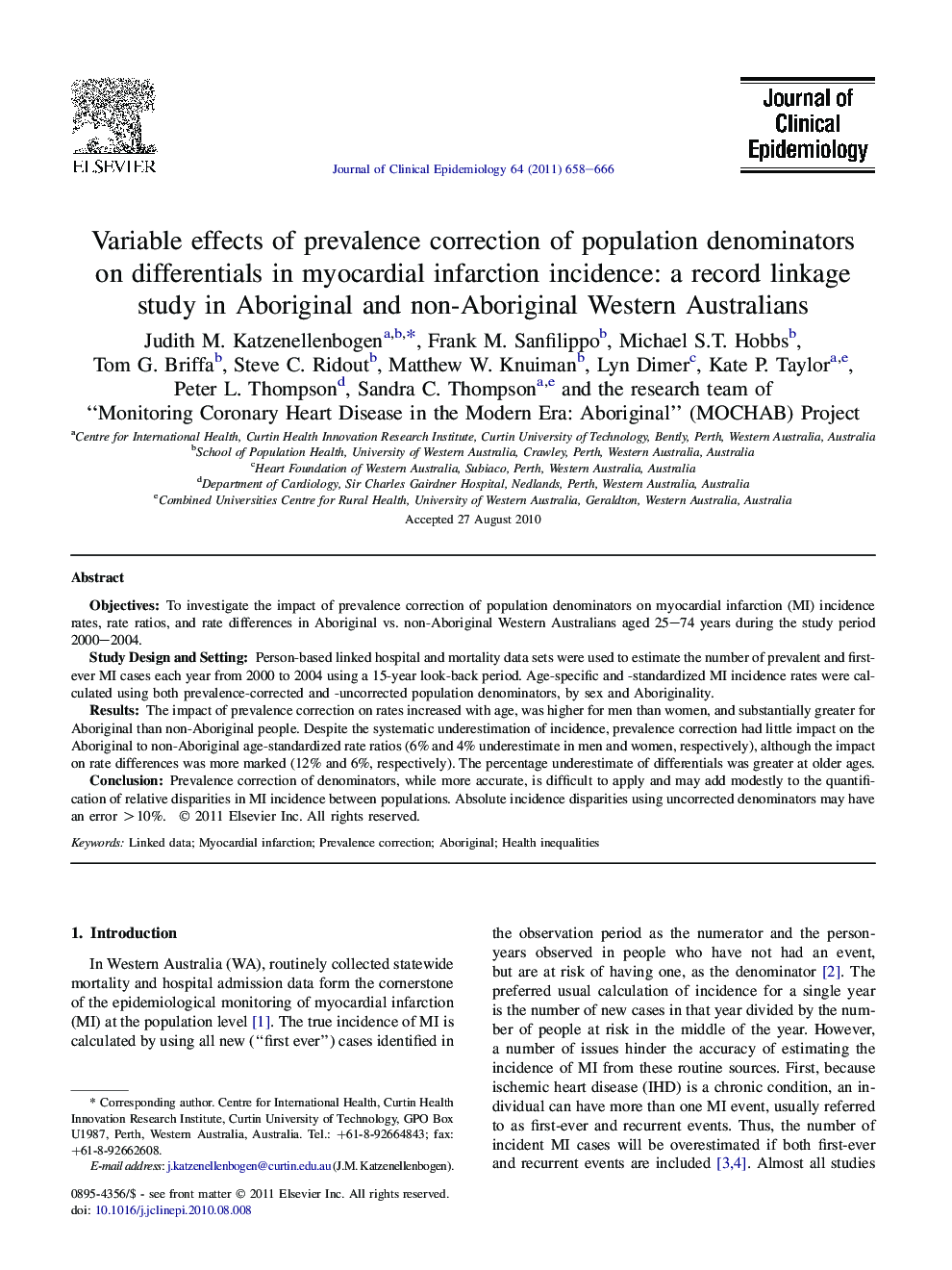| Article ID | Journal | Published Year | Pages | File Type |
|---|---|---|---|---|
| 1082448 | Journal of Clinical Epidemiology | 2011 | 9 Pages |
ObjectivesTo investigate the impact of prevalence correction of population denominators on myocardial infarction (MI) incidence rates, rate ratios, and rate differences in Aboriginal vs. non-Aboriginal Western Australians aged 25–74 years during the study period 2000–2004.Study Design and SettingPerson-based linked hospital and mortality data sets were used to estimate the number of prevalent and first-ever MI cases each year from 2000 to 2004 using a 15-year look-back period. Age-specific and -standardized MI incidence rates were calculated using both prevalence-corrected and -uncorrected population denominators, by sex and Aboriginality.ResultsThe impact of prevalence correction on rates increased with age, was higher for men than women, and substantially greater for Aboriginal than non-Aboriginal people. Despite the systematic underestimation of incidence, prevalence correction had little impact on the Aboriginal to non-Aboriginal age-standardized rate ratios (6% and 4% underestimate in men and women, respectively), although the impact on rate differences was more marked (12% and 6%, respectively). The percentage underestimate of differentials was greater at older ages.ConclusionPrevalence correction of denominators, while more accurate, is difficult to apply and may add modestly to the quantification of relative disparities in MI incidence between populations. Absolute incidence disparities using uncorrected denominators may have an error >10%.
